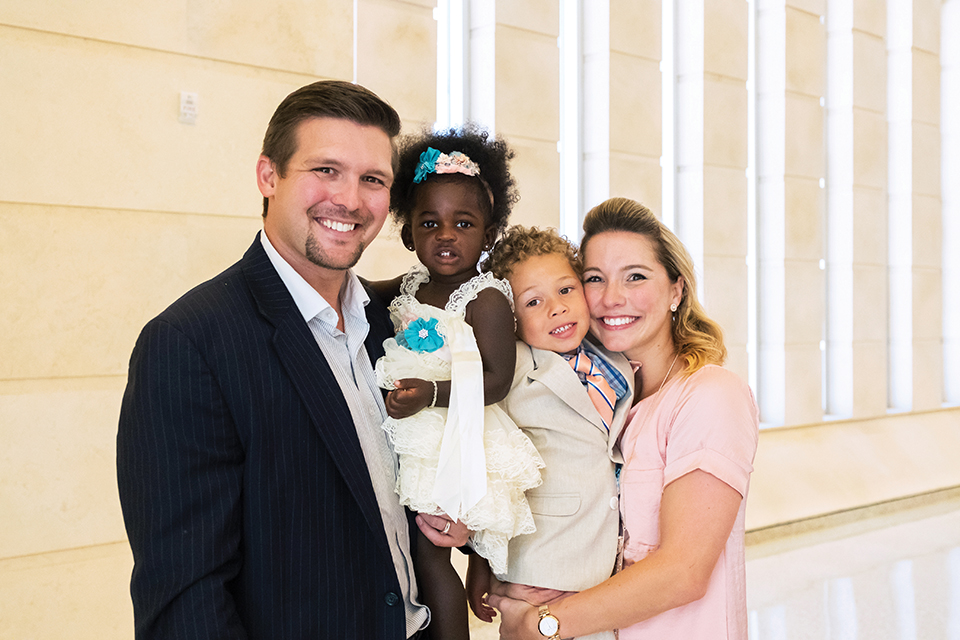Where Hope Grows

Helping Hand Home is paving the path to restore the lives of children.
It’s the oldest residential childcare agency in Travis County, operating for 125 years, and works with kids ages 4-13 who have been severely neglected, abused or abandoned.
Helping Hand Home understands that when children have suffered in inexplicable ways, it takes a special community to help them heal and eventually be strong enough to feel comfortable in a family setting.
Of course, it’s no easy feat, but Helping Hand Home is committed to the cause. In fact, 96 percent of children who left the facility last year are now with loving families and thriving. And according to Chris Janawicz, Director of Residential Services, those numbers are unheard of in the state of Texas.
What is it about this organization that makes it so successful? To start, the Home recognizes that kids who have suffered and have been abused need special care and time to heal.
“That’s where we come in,” Janawicz says. “We know it’s about the type of relationship we offer them as caregivers.”
Unfortunately, some agencies don’t recognize the need for a level of understanding and compassion. Facilities can be generally structured on a reward and consequence system, which isn’t effective for many children. And it’s when the children aren’t treated with the proper care that undesirable behaviors, such as aggression, can continue.
But Helping Hand Home is striving to end this cycle.
“We have to pick up and fill in where their parents did not,” Janawicz says. “What we have to do first is make them feel internally safe and learn to trust us. It’ll help with their brain development, and hopefully, their nervous system development. Eventually, we teach them how to manage on their own without those intense behaviors when they are in times of emotional or psychological distress.”

Helping Hand Home offers kindness and nurturance, and soon the children start to report they feel safe and loved. The idea is based around the attachment theory, which is the belief that we’re biologically pre-programed to form relationships with others.
“Once they get that, we catch them back up to speed and they get to start the childhood that they should’ve had from day one,” Janawicz says.
In order to ensure the children at the Home are successful, the agency also has foster and adoption programs. Foster families are highly trained and knowledgeable in trauma-informed care, so the programs can remain effective for the kids.
Janawicz tells the story of a little girl who arrived at the Home when she was 8 years old.
“She had cigarette burns all over her body, and she lived with us for a year and a half,” Janawicz says. “We found her a family, and 10 years later she came walking in the door. She was 19 years old and was absolutely beautiful.”
Janawicz describes how the young woman came back to see the staff and tell them that she now passes the Home every day on her way to nursing school.
“I was so blown away that she finally got the help that she deserved and needed and then chose a profession out in the world to go help other people,” Janawicz says.
There are many stories like this that Janawicz holds close. Many are stories of cycles being broken as the kids at the Home grow up and raise loving families of their own. Some are stories of children learning to trust again or being able to sit through math class for the first time, each one more touching than the next.
Helping Hand Home also runs a charter school through the University of Texas that was started in the fall of 2008.
“The big deal about the school is teaching the kids how to be in school first. Then we will get to the academics,” Janawicz says.
The staff works with the children if they start to feel overwhelmed or anxious. They’ll let the kids take a break and get centered. Once they’re comfortable again, children can return to the classroom. It’s all about creating success instead of failure.

But even with all the success of Helping Hand Home, they have to raise 55 percent of their money to make the model work, which is nothing short of a big task. And the task is even larger during the holidays when the Home strives to provide each child with their own bag of gifts. The staff works tirelessly to make up for lost time and ensure that the holidays are a fun time for the kids.
Janawicz describes one Christmas morning when a 9-year-old little girl woke up and first saw her presents.
“I was sitting there talking to another little boy, and she came in and all the Barbie gifts were set up for her. She almost fainted. Then she asked, ‘Is all that for me?’”
When Janawicz told her they were, she started sobbing and told him that no one had ever done anything like that for her before.
While the holidays aren’t just about material goods, many of these children haven’t been able to experience the joy that holidays can bring, especially as a child. Every year at the Home they bring in donuts and hot chocolate on Christmas morning and the kids get to come out in their pajamas and find their gifts that were selected just for them — a special moment for many of the children.
It’s through the help of the Austin community that Helping Hand Home can continue to enrich the lives of children in need. They’re teaching the kids how to build their own communities and relationships, and as they learn to trust others and each other, they’re able to move on from their past and start to thrive.






